Curator: Dr. Sorin Heller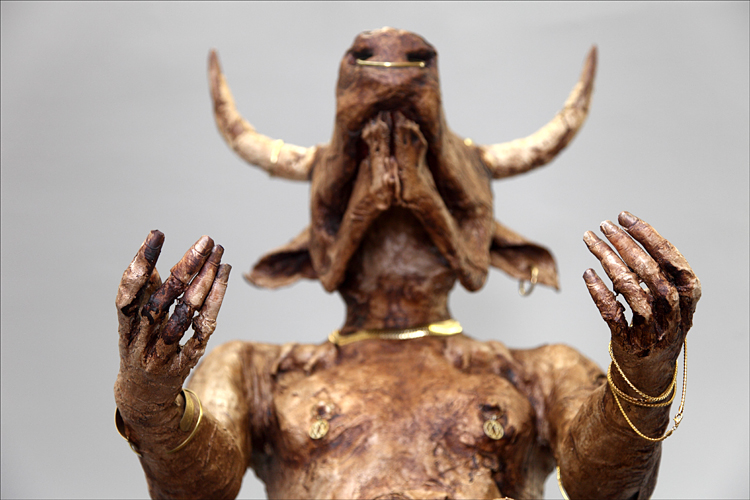 Assi Meshullam, Moloch, 2013, mixed media, 270x107x107 cmThe exhibition "Between Ethos and Myth" is dedicated to the work of two artists, Jonathan Gold and Assi Meshullam. Both are recipients of study grants as part of the Young Artists' Competition in the Visual Arts held by the Hecht Museum annually.
Assi Meshullam, Moloch, 2013, mixed media, 270x107x107 cmThe exhibition "Between Ethos and Myth" is dedicated to the work of two artists, Jonathan Gold and Assi Meshullam. Both are recipients of study grants as part of the Young Artists' Competition in the Visual Arts held by the Hecht Museum annually.
This contest was conceived and initiated by Dr. Hecht, who wished to foster young artists at the beginning of their careers. Gold received his award in the competition's first year, 1992, and Meshullam was the award-winner in 1999.
Since receiving their awards, both Gold and Meshullam have attained important achievements, such as additional grants and prizes and solo and group exhibitions, which have earned them honorable status among Israeli artists.
We are proud to have been among the first to recognize their talent, thanks to Dr. Hecht's initiative, and we believe that their winning of the Hecht Museum Competition was a great incentive for them to persist in their artistic path.
Ofra Rimon
Featuring works by two artists, Jonathan Gold and Assi Meshullam, each of whom has developed an idiosyncratic language all his own, the exhibition unfolds two ostensibly independent narratives. Nevertheless, one may identify a common denominator: both artists challenge cultural, artistic, and religious "sacred cows" in local contexts.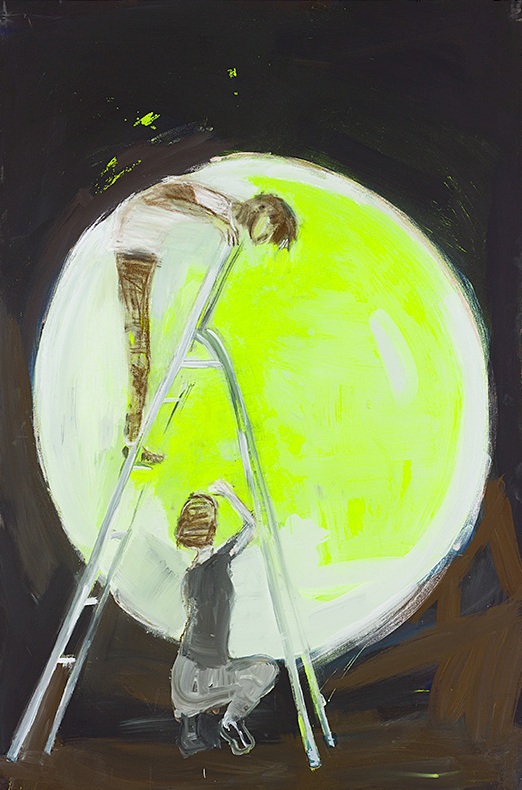 Jonathan Gold, Untitled, 2014, wax and pigment on canvas, 180x129 cmJonathan Gold, born in Kibbutz Afek, intents to construct a collective memory from photographic images of his personal memories of kibbutz life. These photographs are only one of the components with which he mise en scene (stages) situations, as in cinema. They serve as starting point for the paintings, and their documentary quality is blurred, to represent the transition from photograph to painting. Gold selects kibbutz images which have become hallmarks in collective memory, such as the dining room, the shack, the bucket, and above all – the simplicity, emblematic of a socialist society devoid of the bourgeois attributes of property, capital, and consumerism. The simplicity is also manifested in the treatment of objects and in the human figure alike: on the one hand, demystification of the human figure, read as a critique of the ethos of kibbutz society in which man is a key component; on the other hand, mystification of the object, which is characteristic rather of consumerist culture and the bourgeois world.
Jonathan Gold, Untitled, 2014, wax and pigment on canvas, 180x129 cmJonathan Gold, born in Kibbutz Afek, intents to construct a collective memory from photographic images of his personal memories of kibbutz life. These photographs are only one of the components with which he mise en scene (stages) situations, as in cinema. They serve as starting point for the paintings, and their documentary quality is blurred, to represent the transition from photograph to painting. Gold selects kibbutz images which have become hallmarks in collective memory, such as the dining room, the shack, the bucket, and above all – the simplicity, emblematic of a socialist society devoid of the bourgeois attributes of property, capital, and consumerism. The simplicity is also manifested in the treatment of objects and in the human figure alike: on the one hand, demystification of the human figure, read as a critique of the ethos of kibbutz society in which man is a key component; on the other hand, mystification of the object, which is characteristic rather of consumerist culture and the bourgeois world.
Assi Meshullam delves into the relationship between art and religion. This is a part of a larger process in Israeli art – young artists who began working in the 2000s, whose work bridge between religious discourse and secular world views. In Meshullam's work, one may identify allusions to pagan myths – he vacillates between the personal narrative and Jewish, Christian, and pagan myths. His work is akin to provocative defiance of the notion of sanctity. He manipulates the conceptual, the spiritual, and even the religious dimensions of written Hebrew, crossing it – the text thus becomes an object, while the sculptural objects are infused with the sanctity of language, even though they carry connotations of impurity. Meshullam interferes with the exhibition's decoding by demystifying the so-called holy, namely the text, while concurrently mystifying that which is perceived as corporeal, material, even impure – the sculptural object. Meshullam thus constructs a personal mythology centered on examination of the relationship between art and religion from the viewpoint of a non-observant artist who responds to the powerful effect of political and social issues on our daily lives.
Both artists explore values in Israeli society – the concept of the kibbutz, secularism, religion, and art – while introducing processes of mystification and de-mystification which interfere with the reading of the works and propose new modes of reading and exegesis.
Dr. Sorin Heller, Exhibition Curator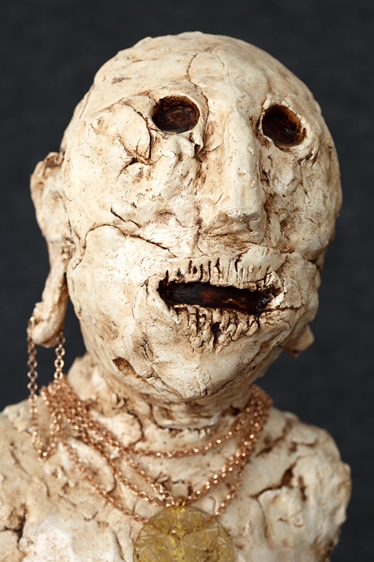 Assi Meshullam, Monument for Children Corpses, 2014, mixed media, 70x20x20 cm
Assi Meshullam, Monument for Children Corpses, 2014, mixed media, 70x20x20 cm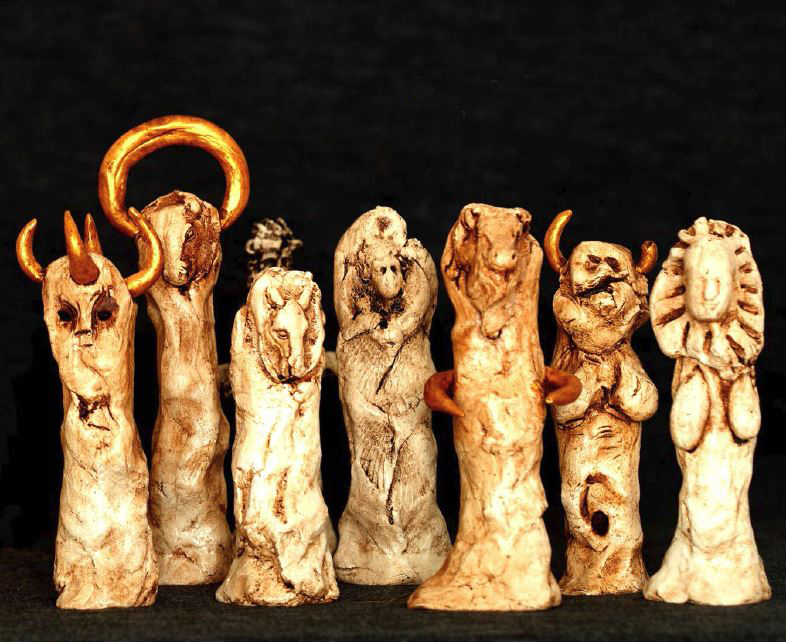 Assi Meshullam, A Thousand Gods, 2015, DAS, acrylic, and oil paints, 15x4x4 cm
Assi Meshullam, A Thousand Gods, 2015, DAS, acrylic, and oil paints, 15x4x4 cm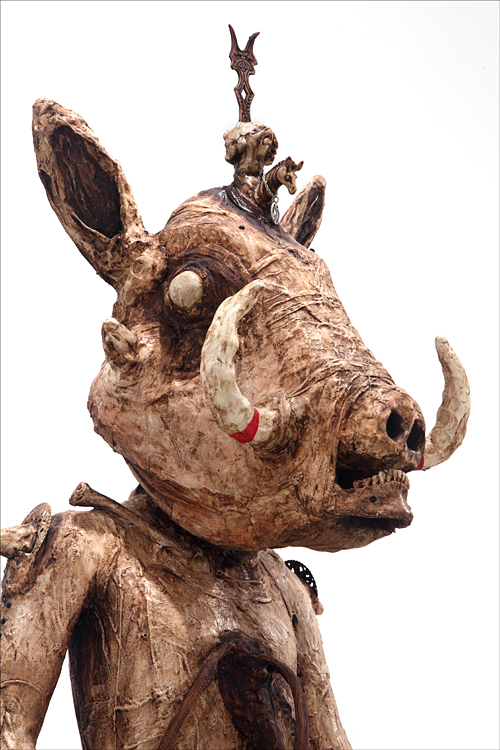 Assi Meshullam, Baal Ha'Loa, 2013, mixed media, 180x50x50 cm
Assi Meshullam, Baal Ha'Loa, 2013, mixed media, 180x50x50 cm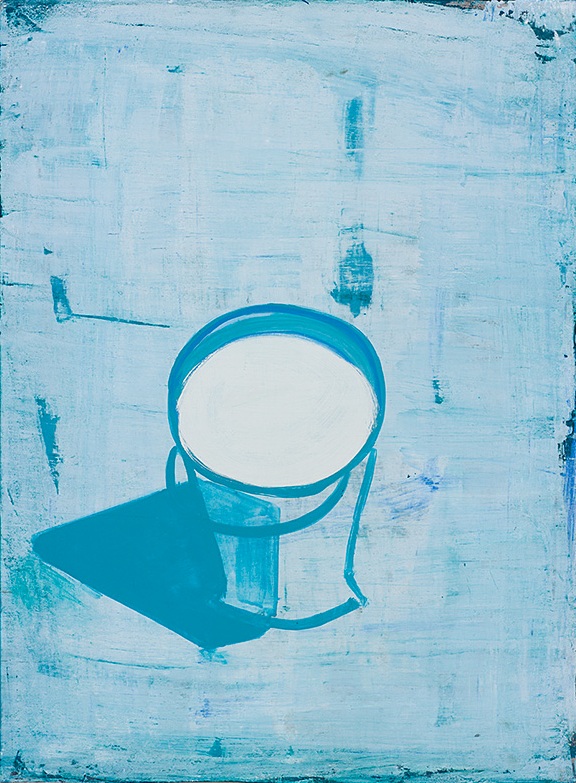 Jonathan Gold, Bucket (after Shalom Sebba), 2013, wax and pigment on canvas, 180x120 cm
Jonathan Gold, Bucket (after Shalom Sebba), 2013, wax and pigment on canvas, 180x120 cm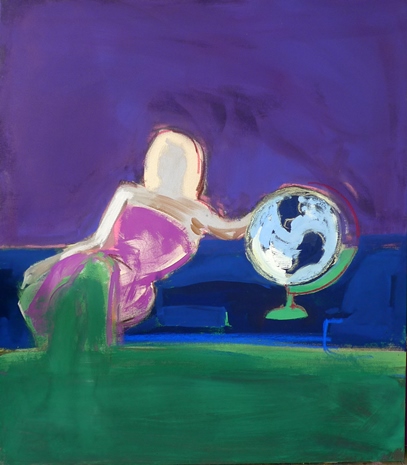 Jonathan Gold, Untitled, 2015, wax and pigment on canvas, 122x105 cm
Jonathan Gold, Untitled, 2015, wax and pigment on canvas, 122x105 cm
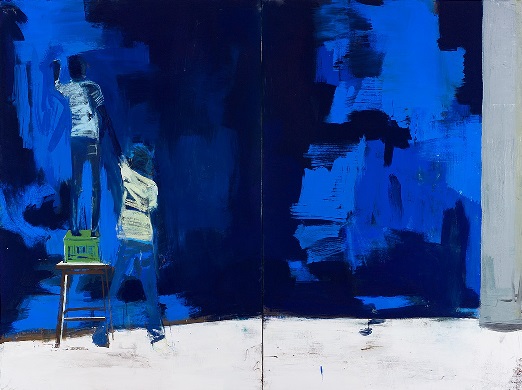 Jonathan Gold, Untitled, diptych, 2014, wax and pigment on canvas, 180x240 cm
Jonathan Gold, Untitled, diptych, 2014, wax and pigment on canvas, 180x240 cm

